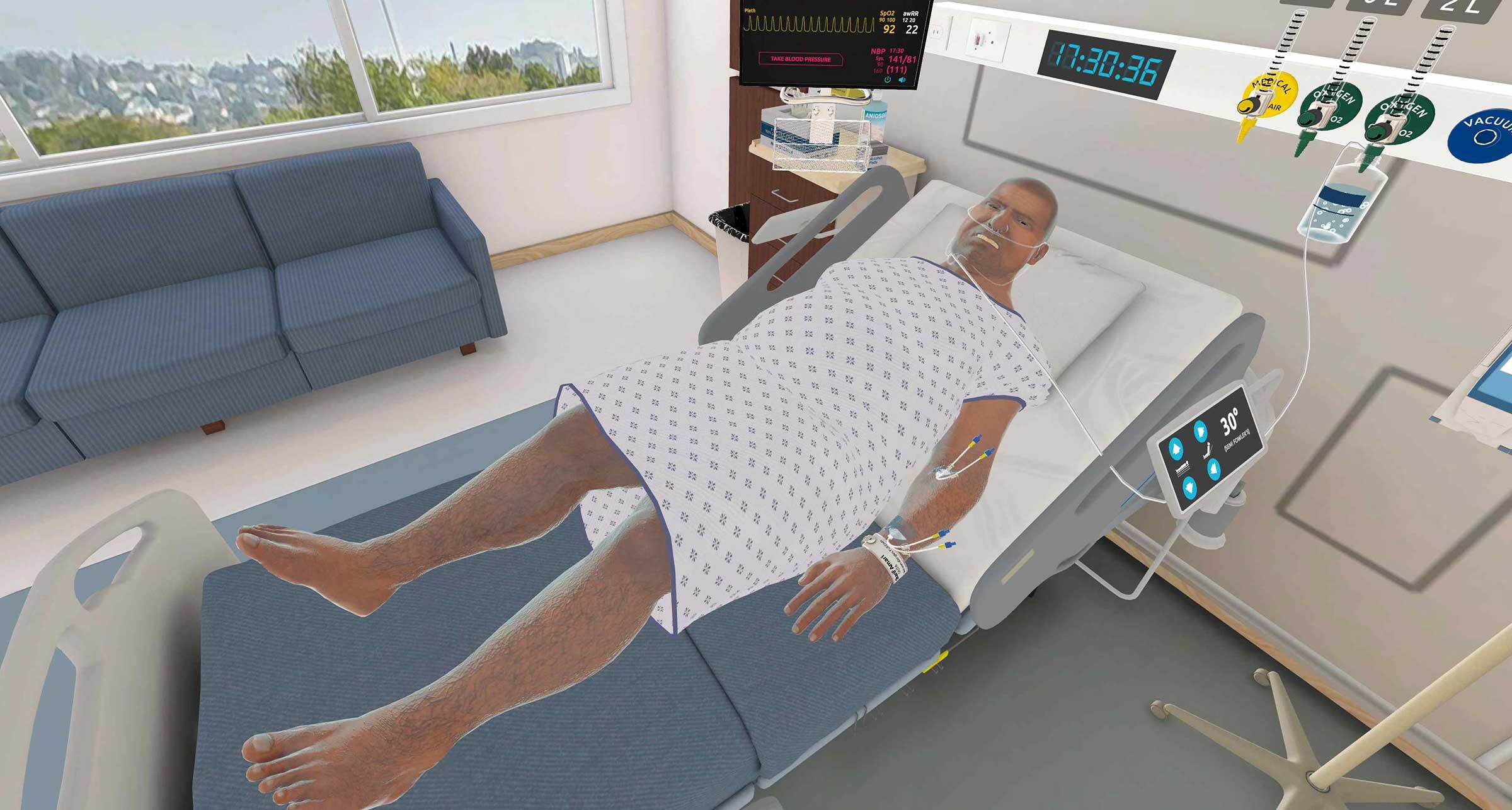5 Simulations to Teach Acute Myocardial Infarction to Nursing Students

Table of Contents
Name of the heading
1- Start your table with the syntax {start-table}
2 - Add an H3 Heading to create a new column (this will be the column title)
3 - List cells as bullet points in a List element
4 - End your table with the syntax {end-table}
As heart disease remains a leading cause of death in the United States, preparing nursing students to recognize and respond effectively to cardiac emergencies is essential. One of the most critical scenarios nurses must master is managing an acute myocardial infarction (AMI)—commonly known as a heart attack.
By using acute myocardial infarction simulations, educators can expose students to life-threatening situations in a safe, controlled environment that fosters critical thinking, clinical judgment, and hands-on practice. From recognizing symptoms to performing emergency interventions, simulation-based education is invaluable to building competence and confidence.
Below are five effective strategies for conducting MI simulations for nurses.
1. Low-Fidelity Task Trainers
Low-fidelity task trainers are basic tools used to develop fundamental nursing skills before advancing to more complex simulations. While they may not fully replicate a cardiac emergency, they are great for practicing essential skills that support acute myocardial infarction simulation training. These include:
- Performing proper ECG lead placement and ECG reading interpretations
- Simulating oxygen and nitroglycerin administration
- Practicing blood pressure and pulse assessment
Task trainers offer repetitive, hands-on learning, helping students become comfortable with the routine aspects of cardiac care. Educators can use these tools to assess basic competency before transitioning students to more elaborate simulations.
2. Standardized Patients
Standardized patients (SPs)—trained actors portraying patients—bring realism to simulations. In an MI nursing simulation, SPs may present with chest pain, one of the most common symptoms of myocardial infarction. Students can engage in active assessment, communication, and patient education, such as:
- Gathering a health history and pain assessment (e.g., onset, location, radiation, and severity)
- Responding to signs of anxiety, sweating, or shortness of breath
- Teaching about nitroglycerin use or lifestyle changes
Standardized patient encounters emphasize the human aspect of cardiac emergency nursing, fostering empathy and effective patient communication. SPs also allow instructors to observe students’ bedside manner, clinical reasoning, and teamwork in real time, making them a valuable addition to any simulation curriculum.
3. High-Fidelity Manikins
High-fidelity manikins provide a realistic and responsive learning experience. Controlled by computers, these manikins simulate complex physiological changes—such as irregular heart rhythms, changes in oxygen saturation, and even verbal cues. This makes them ideal for immersive acute myocardial infarction simulation scenarios, including:
- Rapid deterioration requiring CPR or defibrillation
- Administration of oxygen, and medications like morphine, aspirin, and nitroglycerin
- Assessing patient responses to interventions
These simulations often begin with a chest pain scenario that progresses into a full cardiac arrest, challenging students to act quickly, communicate effectively with the team, and follow established cardiac protocols. Instructors can pause or rewind scenarios to emphasize teaching points, making high-fidelity simulations a valuable tool for cardiac emergency nursing education.
4. Immersive Virtual Reality (VR)
VR sims allow students to step into a totally immersive hospital room where the patient is looking at them, talking to them, and either deteriorating or getting better in real time. Learners have to assess, monitor, and intervene in an evolving MI situation. There are many benefits to immersive VR training for heart attacks, including real-time decision-making with branching outcomes and interactive ECG interpretation training with guided feedback.
VR allows nursing students to build confidence while practicing in high-pressure situations without risk to real patients. VR can replicate many aspects of MI management scenarios, such as administering emergency medications, preparing a patient for cardiac catheterization, or calling a rapid response team.
UbiSim is an immersive VR platform created by nurses for nurse educators. In UbiSim’s Acute Myocardial Infarction VR scenario, students can learn how to assess a patient having a heart attack, prioritize nursing interventions, and utilize SBAR when communicating with the healthcare team.

5. Unfolding Case Studies
Unfolding case studies are narrative-based simulations that evolve over time, revealing new clinical data as the scenario progresses. This type of simulation challenges students to think critically and adapt to changing patient conditions. In the context of acute myocardial infarction simulation, an unfolding case might begin with a 55-year-old male presenting to the ED with mild chest discomfort. He may then demonstrate subsequent changes in vital signs and lab values, including rising troponin levels and deteriorating ECG results, indicating ST-elevation myocardial infarction (STEMI).
Students must continually reassess, make decisions, and communicate with interdisciplinary team members. This strategy reinforces the importance of ECG interpretation training, prioritization, and escalation of care. Unfolding cases are particularly effective in group settings, where collaboration and discussion enhance learning.
Final Thoughts
Simulation-based education offers powerful, hands-on learning experiences that prepare nursing students to handle real-life cardiac emergencies with skill and confidence. By incorporating a mix of simulation modalities, nursing educators can address the full spectrum of competencies needed in cardiac emergency nursing.
Each simulation type brings unique learning opportunities—whether reinforcing basic skills, enhancing patient communication, or refining critical thinking and quick decision-making. Ultimately, acute myocardial infarction simulation doesn’t just teach students how to respond to heart attacks—it prepares them to save lives.
FAQs
Heading 1
Heading 2
Heading 3
Heading 4
Heading 5
Heading 6
Lorem ipsum dolor sit amet, consectetur adipiscing elit, sed do eiusmod tempor incididunt ut labore et dolore magna aliqua. Ut enim ad minim veniam, quis nostrud exercitation ullamco laboris nisi ut aliquip ex ea commodo consequat. Duis aute irure dolor in reprehenderit in voluptate velit esse cillum dolore eu fugiat nulla pariatur.
Block quote
Ordered list
- Item 1
- Item 2
- Item 3
Unordered list
- Item A
- Item B
- Item C
Bold text
Emphasis
Superscript
Subscript
Explore more
.jpg)
Step Inside the Room of Errors: Playful Exploration, Serious Skills
Learn how UbiSim's Room of Errors transforms nurse training through investigative play. Students spot hidden safety risks and build situational awareness.
.jpg)
1.19: Realism Learners Can Feel, Actionable Insights Educators Can Trust
UbiSim version 1.19 brings AI-powered narrative analysis, two new clinical scenarios, and enhanced wound care fidelity to nursing simulation.
.jpg)
Why Nursing Simulation Should Start on Day One, Not Later
Don’t treat nursing simulation as a backup. Research shows early VR simulation reduces student stigma by 32%. Here's how to integrate it from day one.




